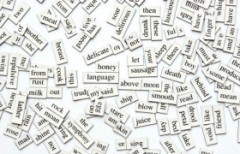A well-known British linguist came to New York to give a lecture on the double negative, an expression in which two negatives add up to a positive, such as, “He’s not unlike his sister.” In his lecture, the British professor said that in all his years of research into the languages of the world he had never come across a double positive, that is to say, two positives adding up to a negative.
An American scholar and a native New Yorker was sitting in the front row. When he heard this claim from the visiting lecturer, he dismissed the comment with a wave of his hand, saying in a loud, sarcastic voice, “Yeah, yeah.” The audience exploded in laughter.
While the American may have won the room, the Brit might have won the argument by pointing out that, in this case, “Yeah, yeah,” was made negative by the sarcastic intonation and the gesture of dismissal. In fact, the two words could just as well express a positive.
For instance, when you’re listening to a child struggle to tell a story, you might say with a nod and a rising intonation, “Yeah… yeah…,” to encourage the child to keep talking.
The important issue for us is not whether “Yeah, yeah” qualifies as a double positive. The real issue is that as speakers, we like to think that our intended meaning resides solely in the words we speak, whereas listeners find deeper, more complex meanings in the multi-dimensional experience of words coded with intonations and gestures.
In fact, listeners detect meaning by interpreting tone of voice, hand gestures, tilts of the head, and dancing eyebrows. “Yeah, yeah,” is either negative or positive depending on how it’s said.
Words count, content is king, so choose your words carefully. But think of them as notes on a page to be brought to life by the play of your voice and body.
